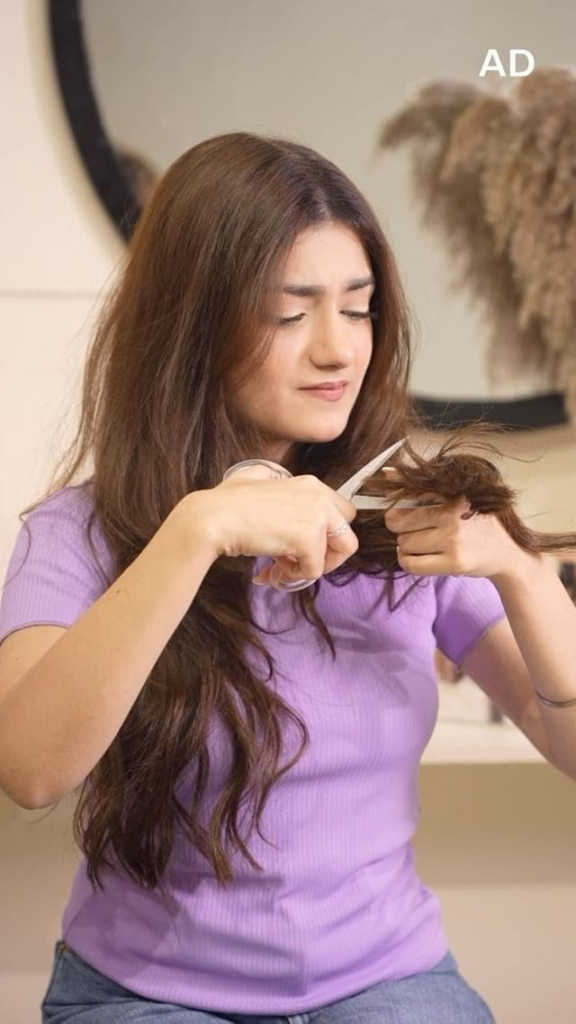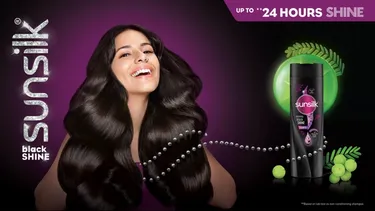Sunsilk was launched in 1954 by Unilever in the UK. It quickly became popular due to its promise of salon-like hair care at home. Over the years, Sunsilk expanded its product line, introducing shampoos and conditioners for various hair types, and formed partnerships with global hair care experts to boost its credibility and innovation.
With a presence in over 80 countries, Sunsilk has become a household name in hair care across diverse markets. Interestingly, while Sunsilk has a strong foothold in Asia, Latin America, and Europe, it has discontinued operations in the USA and Canada. Sunsilk’s mission is to empower women to embrace life with confidence by providing them with vibrant, well-nourished hair that can withstand the demands of a busy lifestyle.
Market Entry in India
Sunsilk entered the Indian market in the 1964, originally with a hairspray. To penetrate the Indian market, Sunsilk focused on both urban and rural distribution through an omnichannel approach, ensuring availability in convenience stores, supermarkets, and traditional retail outlets.
Sunsilk was one of the first brands in India to introduce shampoos tailored for different hair types, such as dry, oily, and damaged hair. This helped the brand quickly capture a large market share, positioning it as a trusted expert in hair care.
It also did a lot of TVCs to build brand recall right from the start. Do you remember this ad:
STP & SWOT Analysis
Segmentation:
In terms of demographics, it focuses on women aged 15-35, particularly from middle-income groups. This range includes young students, working professionals, and homemakers who are fashion-conscious and eager to maintain a good hair routine without breaking the bank.
Geographically, Sunsilk targets both urban and semi-urban regions in markets like India, where hair care is an integral part of daily self-care routines. Semi-urban regions are a key target due to their growing purchasing power and rising awareness of personal grooming.
In terms of psychographics, Sunsilk appeals to women who are appearance-driven, fashion-conscious, and seek affordable yet quality products to manage various hair issues like dryness, oiliness, and hair fall. These consumers often look for products that offer immediate results and boost confidence.
Targeting:
The brand primarily targets middle-class and upper-middle-class women who seek reliable yet affordable hair care products. These women are often inspired by celebrities and influencers, which is why Sunsilk uses famous personalities in its advertising campaigns to resonate with their target demographic.
Sunsilk’s product line is designed to cater to diverse hair types and conditions, making it a mass-market brand with wide appeal.
Positioning:
Sunsilk positions itself as a fun, youthful brand that offers expert hair care solutions. Its use of vibrant colors, celebrity endorsements, and collaborations with hair care experts helps reinforce its image as a trusted and effective brand.
Strengths:
Global Brand Recognition: Sunsilk has been a trusted name for decades, gaining global recognition and loyalty across diverse markets.
Product Variety: One of Sunsilk’s greatest strengths is its extensive range of products tailored to different hair types and concerns.
Effective Marketing: The brand consistently uses celebrity endorsements and influencer marketing to maintain a high profile.
Weaknesses:
Limited Product Innovation: Despite its wide product variety, Sunsilk has been criticized for its slower pace of product innovation compared to competitors like Dove and Pantene, who have been quicker to jump on trends like sulfate-free or eco-friendly hair care.
Opportunities:
- Natural and Organic Product Lines: The global shift towards more natural and organic hair care products presents a massive growth opportunity for Sunsilk.
- Expansion in Rural Markets: By tailoring products specifically to these consumers – especially with smaller, affordable SKUs – Sunsilk could boost its market share .
Threats:
Increased Competition from Organic Brands: Sunsilk faces competition from brands like Patanjali, Biotique, and Himalaya, which emphasize natural and chemical-free formulations.
Shifting Consumer Preferences: There is a growing preference for sustainable and chemical-free products, which could pose a threat to Sunsilk’s traditional formulations. If they fail to adapt to this trend, they might lose ground to more innovative brands.
Competitors:
Dove:
Positioned as a premium brand, Dove emphasizes gentle care with a focus on moisture, softness, and hair health. It is often marketed to consumers looking for superior nourishment and a more “luxurious” feel to their hair care routine.
Pantene:
Known for its innovation, Pantene competes with Sunsilk by promoting hair strength and repair. They are especially popular among those suffering from damaged hair, and they target the premium segment with ads highlighting their scientific credibility.
Clinic Plus:
This is another significant player in India, appealing to the more price-sensitive segment of the market. Clinic Plus has carved out a niche by emphasizing traditional Indian values, focusing on family-oriented care and affordability, making it a strong competitor in the mass market.
While Dove and Pantene dominate the premium hair care segment, Sunsilk holds a leadership position in the affordable segment, where it continues to attract the majority of price-conscious consumers in markets like India.
Marketing Mix:
Product:
Sunsilk has a diverse product range, crafted specifically to meet the needs of Indian consumers. Sunsilk launched variants that catered to challenges such as anti-dandruff, anti-hair fall, and damage repair.
In collaboration with international hair experts like Teddy Charles, Sunsilk has continuously evolved its formulas to include vitamins and keratin.
The partnership with stylists and experts gave the product a premium feel, even though it remained affordable.
Sunsilk’s approach has been to provide the perfect balance of affordability, expertise, and variety, making it a go-to for young Indian women who want professional-level care without breaking the bank. Their packaging is also distinct, making it easily recognizable in shops.
Price:
Sunsilk follows a penetration pricing strategy, keeping its products affordable for the middle-income segment, which makes up a substantial portion of the Indian market.
The company offers flexible packaging options, ranging from small sachets priced at ₹1-₹3, which cater to daily wage workers and budget-conscious rural buyers. This significantly increased its market share in both rural and semi-urban regions.
It also offers larger bottles for urban users who prefer convenience. This ensures that Sunsilk maintains its presence across income segments, especially in a price-sensitive market like India.
Place:
Backed by Unilever’s extensive distribution network, the brand has reached every corner of the country. Sunsilk products are available in supermarkets, general trade stores, pharmacies, and kirana stores (small, local shops), ensuring their accessibility across urban and rural areas.
In addition to offline distribution, Sunsilk has successfully embraced e-commerce platforms like Amazon, Flipkart, and Nykaa, allowing urban consumers to purchase products online.
In rural India, Sunsilk’s penetration is backed by Unilever’s innovative rural distribution program, Shakti, which involves local women entrepreneurs who distribute Unilever products in their villages.
This unique approach has enabled Sunsilk to tap into the untapped potential of India’s vast rural population, helping the brand expand its reach significantly.
Promotion:
Sunsilk’s promotional strategy in India has always been heavily reliant on traditional advertising. It is endorsed by Alia Bhatt, whose popularity among young Indian women has helped Sunsilk establish itself as a desirable brand.
On digital platforms like Instagram and YouTube, Sunsilk actively engages with influencers, beauty bloggers, and micro-influencers.

These partnerships result in user-generated content, like tutorials, reviews, and hairstyling hacks, which further amplify the brand’s reach among younger consumers who rely heavily on online reviews and tutorials for beauty products.
In a Nutshell
Sunsilk’s success in India is a result of its comprehensive approach to product development, distribution, and marketing. By focusing on affordable, tailored solutions for various hair types and leveraging both urban and rural channels, the brand has positioned itself as a trusted name in hair care.
However, the brand must continue to innovate, particularly in response to the growing demand for natural and eco-friendly products, to maintain its competitive edge and adapt to evolving consumer preferences in the hair care market.
Key Takeaways from Sunsilk’s Marketing
Target Market Alignment: Tailor products for specific customer segments like Sunsilk did with different hair types to capture broader market share.
Affordable Luxury: Offer premium-quality products at affordable prices to appeal to budget-conscious yet quality-seeking consumers.
Omnichannel Distribution: Ensure strong offline and online distribution to reach both urban and rural markets effectively.
Celebrity & Influencer Power: Leverage celebrity endorsements and influencer collaborations to boost brand visibility and resonate with target audiences.
Localized Packaging & Pricing: Use flexible packaging and pricing strategies to cater to different income levels, enhancing brand accessibility.


